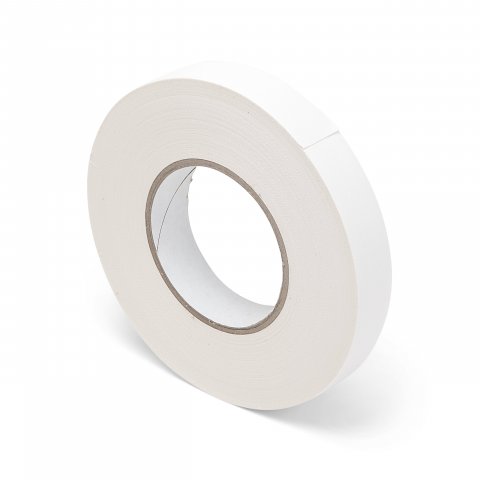<p>easy to tear; highly adhesive; matte finish</p>
| Location in Store | EGI31A |
|---|---|
| Article No. | 4500843-001-ST |
extremely strong permanent bond (0,3 N/cm), extremely tear resistant, weatherproof, temperature resistant from -10 °C to +80 °C, PE coated fabric carrier material (mesh 50), th = 0.31 mm; bonding agent is unvulcanized rubber
This robust fabric adhesive tape has just about as many names as it has uses (at least in German). In English there are at least two: duct tape and gaffer tape. Fabric adhesive tape is used to protect, mark, patch, attach, repair, seal, hold and so on. Without this tool it is possible that the trade show circuit would simply fall apart – this is true for stagehand work as well. Actually, a person without gaffer tape is only half a person; every camper with gaffer tape is either insane or it is his first time in the wildnerness!
This fabric tape is a thick, tightly meshed, high quality and, above all, matte adhesive tape for a thousand and one purposes. When used on stage or in a photo studio, its matte surface keeps reflections down to a minimum. The adhesive strength is, as would be expected for any gaffer tape worth the name, extremely high but it should be noted that its brother’s (Gaffer tape, glossy) is even higher.
Often the terms “gaffer” or “gaff” tape are used to refer to any wide, strong fabric adhesive tape. This name has its origins in the word for the head of lighting on a stage or movie set – the gaffer – and generally means a sturdy fabric tape with high adhesive strength that can be torn by hand and which has proven to be easy to use for making quick fixes of various kinds on stage.
Gaffer tape comes in different colours and qualities from different producers. The tapes come with different kinds of adhesive (hot melt is the lowest and cheapest quality, unvulcanized rubber is the best quality). It also comes in different coatings and surfaces (matte/glossy) and the various coated fabrics can also have different mesh sizes. A tape with a more open mesh (e.g. GAFFER FABRIC ADHESIVE TAPE, GLOSSY) is more supple and better suited for rougher surfaces; a tape with a finer mesh and stiffer fabric like this one, on the other hand, is most of all sturdier.
Free standard delivery within Germany and free collection from Modulor in Berlin for orders over 89 €.
5,95 € shipping costs, if order value is less than 89 € (DE)
2,95 € for pick-up at the store in Berlin, if order value is less than 89 €
Express and forwarding shipping
From 19 € express surcharge you will receive your order particularly quickly with standard shipping within Germany.
From 69€ is the cost of shipping within Germany. You can recognize articles with forwarding shipping in the store by the truck symbol .
Especially for Berlin
From 34.90 € courier shipping for standard and forwarding goods.
- Free returns for standard shipping within Germany
- Extended, voluntary return policy of 30 days for complete, undamaged goods in their original packaging
- You are responsible for the cost of returns for forwarding goods and returns from a country outside Germany
Excluded from returns
Excluded from returns are sections of rolled goods, cut-to-size pieces and other goods made especially for you, as well as used goods, newspapers, magazines and periodicals, Modulor vouchers and items that we do not carry in our range but have ordered at your request.
Good to know: The furniture variants in our configurators that can be delivered quickly are not cut to size, but standard formats that can be returned.
